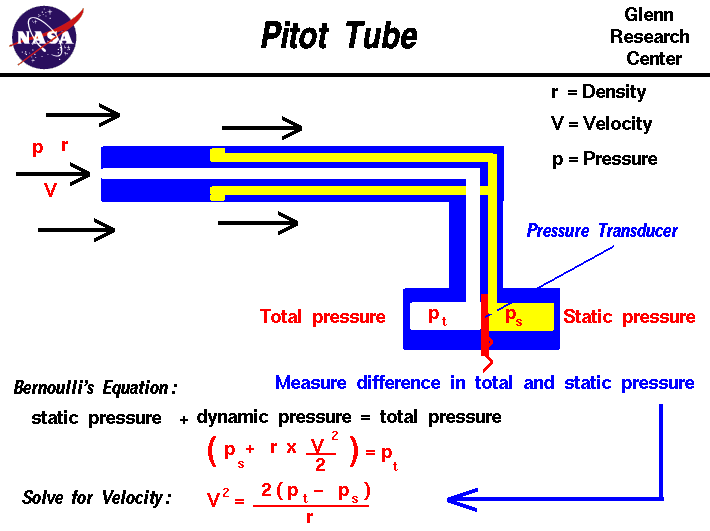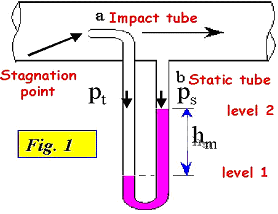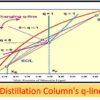Pitot Tube Working Principle
Pitot Tube
A Pitot tube is a device use to measure the fluid flow velocity. The Pitot tube was invented by a french engineer Henri Pitot i early 18s and further modified by a french scientist Henry Darcy. The pitot tube is used to measure the local flow velocity at a given point in the flow stream and not the average flow velocity in the pipe or conduit, Pitot tube is made up of a bent glass tube which is used to determine the airspeed of an aircraft, water speed of a boat, and to measure liquid, air and gas flow velocities in certain industrial applications.. Pitot tubes can be very simple devices with no moving parts used to measure flow velocities.

Source Credit : https://www.grc.nasa.gov
How Pitot Tube Flowmeters Work ??
https://youtu.be/AbBDMQ7fHS4
Pitot tubes are a common type of insertion flowmeter. The above animation shows the basics for a Pitot tube, where a pressure is generated in a tube facing the flow, by the velocity of the fluid. This ‘velocity’ pressure is compared against the reference pressure (or static pressure) in the pipe, and the velocity can be determined by applying a simple equation.
By applying the Bernoulli Equation one can calculate fluid flow velociyu at a point.
p + 1/2 ρ v2 + γ h = constant along a streamline (1)
where
p = static pressure (relative to the moving fluid) (Pa)
ρ = density (kg/m3)
v = flow velocity (m/s)
γ = ρ g = specific weight (N/m3)
g = acceleration of gravity (m/s2)
h = elevation height (m)
Each term of the equation has the dimension force per unit area N/m2 (Pa) – or in imperial units lb/ft2 (psi).
Static Pressure and stagnation pressure
Stagnation Pressure is the pressure which is achieved when a flowing fluid is reduced to zero velocity in a frictionless process or say it’s the pressure at the stagnation point in a fluid flow. The pressure inside the pitot tube increases on the cost of kinetic head loss.
Pstag = Pstat+Pdynamic (2)
Generally the concept of stagnation pressure comes into picture when we are dealing with pitot-tube. Pitot tube is a device which is used to measure the flow velocity either in pipes or in open channels.


While static pressure is the pressure exerted on the body when it remains at rest.
Working:
- The liquid flows up the tube and when equilibrium is attained, the liquid reaches a height above the free surface of the water stream.
- Since the static pressure, under this situation, is equal to the hydrostatic pressure due to its depth below the free surface, the difference in level between the liquid in the glass tube and the free surface becomes the measure of dynamic pressure. Therefore, we can write, neglecting friction,

-

Fig 2. (a) Simple Pitot Tube (b.1) tube for measuring the Stagnation Pressure (b.2) Static and Stagnation tubes together
where p0, p and V are the stagnation pressure, static pressure and velocity respectively at point A (Fig. 2).

Generally the concept of stagnation pressure comes into picture when we are dealing with pitot-tube. Pitot tube is a device which is used to measure the flow velocity either in pipes or in open channels.
The first term – p – is the static pressure. It is static relative to the moving fluid and can be measured through a flat opening in parallel to the flow.
Industrial Applications
- In industry, the flow velocities being measured are often those flowing in ducts and tubing where measurements by an anemometer would be difficult to obtain. In these kinds of measurements, the most practical instrument to use is the pitot tube.





















6 Responses
[…] Pitot Tube Working Principle […]
[…] Pitot Tube Working Principle […]
[…] Pitot Tube Working Principle […]
[…] Pitot Tube […]
[…] Pitot Tube […]
[…] Pitot Tube […]